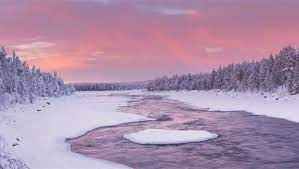Hibernation
"Embracing the Art of Hibernation"
Hibernation is a fascinating natural phenomenon that occurs in various animals and some plants as a survival strategy during harsh environmental conditions, primarily in cold winter months. This period of dormancy allows these organisms to conserve energy, reduce metabolic activity, and withstand unfavorable conditions until more hospitable seasons return. Here's a detailed description of hibernation:

Purpose of Hibernation: Hibernation serves as a survival mechanism to cope with extreme environmental challenges, such as limited food availability, frigid temperatures, and reduced daylight. By entering a state of hibernation, animals can avoid the need for constant foraging and maintain their energy reserves.
Physiological Changes: During hibernation, animals experience significant physiological changes. Their heart rate drops dramatically, often to just a few beats per minute, and their breathing becomes very slow and shallow. Metabolism is reduced to a minimal level, and body temperature drops significantly but stays above freezing. This energy-saving state allows them to survive without eating for extended periods.
Behavioral Aspects: Hibernating animals typically seek out sheltered locations like burrows, caves, or nests. They enter a deep, prolonged sleep-like state, during which they are difficult to awaken and are largely unresponsive to external stimuli. This behavior protects them from predators and conserves their energy.
Hibernating Species: Many mammals are known to hibernate, including bears, chipmunks, hedgehogs, and bats. Each species has its own unique adaptations and hibernation patterns. Some animals, like bears, give birth during hibernation, while others, like chipmunks, wake periodically to eat stored food.
Duration of Hibernation: The duration of hibernation varies depending on the species and environmental conditions. Some animals may hibernate for several months, while others only for a few weeks. The cycle ends when environmental conditions become more favorable for survival, triggering the animal to awaken and resume normal activity.
Hibernation and Human Implications: The study of hibernation has implications for various fields, including medicine, as it provides insights into metabolic regulation, organ preservation, and potential applications for human health, such as in the field of cryonics.
Plants and Hibernation: While most people associate hibernation with animals, some plants also enter a form of dormancy during harsh seasons. This process, known as dormancy or winter dormancy, involves reduced growth, leaf loss, and other adaptations to conserve energy until spring.
In summary, hibernation is a remarkable survival strategy that allows certain animals and plants to endure the challenges of winter or adverse environmental conditions. It involves profound physiological and behavioral changes that help them conserve energy, reduce metabolic demands, and ultimately increase their chances of surviving until more favorable conditions return.
Hibernation is a fascinating natural phenomenon that occurs in various animals and some plants as a survival strategy during harsh environmental conditions, primarily in cold winter months. This period of dormancy allows these organisms to conserve energy, reduce metabolic activity, and withstand unfavorable conditions until more hospitable seasons return. Here's a detailed description of hibernation:

Purpose of Hibernation: Hibernation serves as a survival mechanism to cope with extreme environmental challenges, such as limited food availability, frigid temperatures, and reduced daylight. By entering a state of hibernation, animals can avoid the need for constant foraging and maintain their energy reserves.
Physiological Changes: During hibernation, animals experience significant physiological changes. Their heart rate drops dramatically, often to just a few beats per minute, and their breathing becomes very slow and shallow. Metabolism is reduced to a minimal level, and body temperature drops significantly but stays above freezing. This energy-saving state allows them to survive without eating for extended periods.
Behavioral Aspects: Hibernating animals typically seek out sheltered locations like burrows, caves, or nests. They enter a deep, prolonged sleep-like state, during which they are difficult to awaken and are largely unresponsive to external stimuli. This behavior protects them from predators and conserves their energy.
Hibernating Species: Many mammals are known to hibernate, including bears, chipmunks, hedgehogs, and bats. Each species has its own unique adaptations and hibernation patterns. Some animals, like bears, give birth during hibernation, while others, like chipmunks, wake periodically to eat stored food.
Duration of Hibernation: The duration of hibernation varies depending on the species and environmental conditions. Some animals may hibernate for several months, while others only for a few weeks. The cycle ends when environmental conditions become more favorable for survival, triggering the animal to awaken and resume normal activity.
Hibernation and Human Implications: The study of hibernation has implications for various fields, including medicine, as it provides insights into metabolic regulation, organ preservation, and potential applications for human health, such as in the field of cryonics.
Plants and Hibernation: While most people associate hibernation with animals, some plants also enter a form of dormancy during harsh seasons. This process, known as dormancy or winter dormancy, involves reduced growth, leaf loss, and other adaptations to conserve energy until spring.
In summary, hibernation is a remarkable survival strategy that allows certain animals and plants to endure the challenges of winter or adverse environmental conditions. It involves profound physiological and behavioral changes that help them conserve energy, reduce metabolic demands, and ultimately increase their chances of surviving until more favorable conditions return.
#Hibernation
#WinterSleep
#HibernateMode
#SleepingBeauty
#HibernateLife
#CozyNights
#SnuggleSeason
#ColdWeatherNaps
#RestAndRecharge
#WinterRetreat
#WinterSleep
#HibernateMode
#SleepingBeauty
#HibernateLife
#CozyNights
#SnuggleSeason
#ColdWeatherNaps
#RestAndRecharge
#WinterRetreat



Comments
Post a Comment